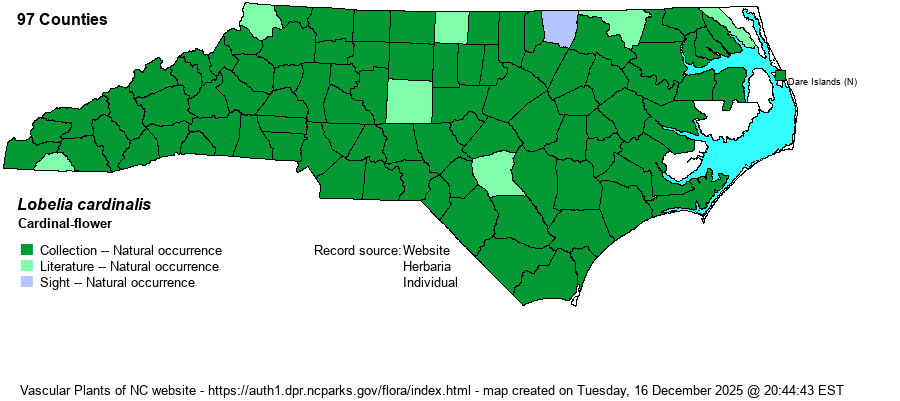| Author | L. | |
| Distribution | Throughout the state; probably in all 100 counties.
This is a very widespread species across most of North America, ranging from eastern Canada south to central FL and CA. | |
| Abundance | Generally fairly common to common statewide, except rare to uncommon in the northeastern and far eastern counties. | |
| Habitat | This is a wetland species of many habitats, usually in fairly rich and muddy sites. It is found along pond and lake shores, streamsides, marsh edges, and in openings of bottomlands and swamps. |
| Phenology | Blooms from July to October, and fruits shortly after flowering. | |
| Identification | This is one of the most conspicuous and beautiful of the state's wildflowers, known to all who venture outdoors. It is an erect herb, usually about 2-4 feet tall, mostly unbranched. The numerous alternate stem leaves are lanceolate to oblong, about 5-6 inches long and 1-2 inches wide, and barely serrated. The 5-6 inches long raceme at the end of the stalk contains numerous, crowded flowers, each deep red to crimson red (but not scarlet!), and about 1.5 inches long and tall from the front view. No further description is necessary; there is nothing remotely looking like the species in bloom, and practically no other color in nature (plant or animal) is as rich and deep red as the petals of this species. | |
| Taxonomic Comments | None
| |
| Other Common Name(s) | None. Most references use two words with no hyphen, which is certainly fine, though the website prefers not to have the word "Flower" as a stand-alone word in a common name. | |
| State Rank | S5 | |
| Global Rank | G5 | |
| State Status | | |
| US Status | | |
| USACE-agcp | FACW link |
| USACE-emp | FACW link |

